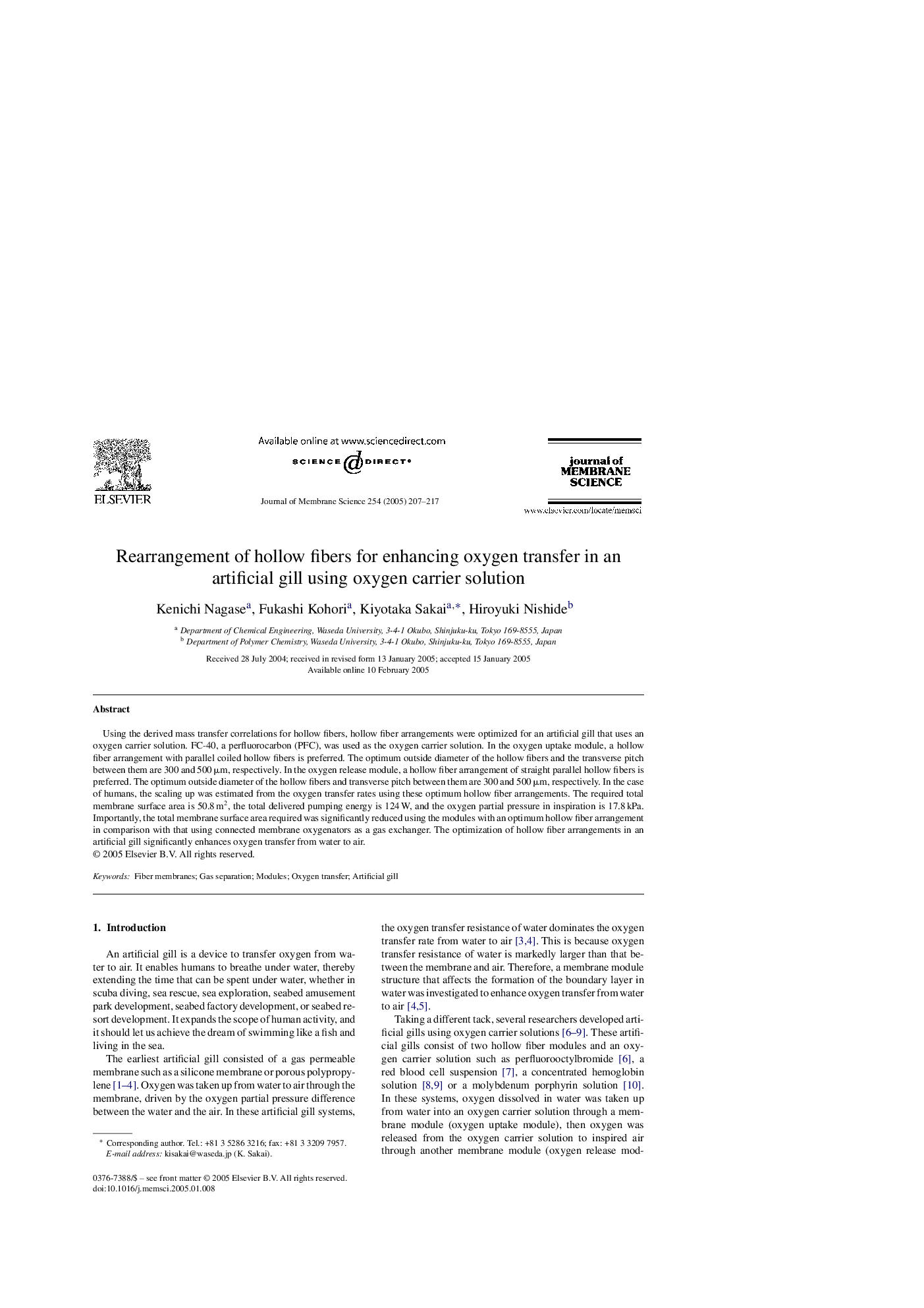| Article ID | Journal | Published Year | Pages | File Type |
|---|---|---|---|---|
| 9684883 | Journal of Membrane Science | 2005 | 11 Pages |
Abstract
Using the derived mass transfer correlations for hollow fibers, hollow fiber arrangements were optimized for an artificial gill that uses an oxygen carrier solution. FC-40, a perfluorocarbon (PFC), was used as the oxygen carrier solution. In the oxygen uptake module, a hollow fiber arrangement with parallel coiled hollow fibers is preferred. The optimum outside diameter of the hollow fibers and the transverse pitch between them are 300 and 500 μm, respectively. In the oxygen release module, a hollow fiber arrangement of straight parallel hollow fibers is preferred. The optimum outside diameter of the hollow fibers and transverse pitch between them are 300 and 500 μm, respectively. In the case of humans, the scaling up was estimated from the oxygen transfer rates using these optimum hollow fiber arrangements. The required total membrane surface area is 50.8 m2, the total delivered pumping energy is 124 W, and the oxygen partial pressure in inspiration is 17.8 kPa. Importantly, the total membrane surface area required was significantly reduced using the modules with an optimum hollow fiber arrangement in comparison with that using connected membrane oxygenators as a gas exchanger. The optimization of hollow fiber arrangements in an artificial gill significantly enhances oxygen transfer from water to air.
Related Topics
Physical Sciences and Engineering
Chemical Engineering
Filtration and Separation
Authors
Kenichi Nagase, Fukashi Kohori, Kiyotaka Sakai, Hiroyuki Nishide,
